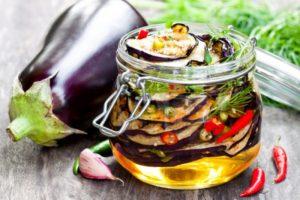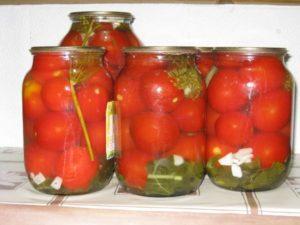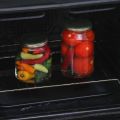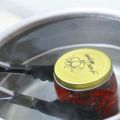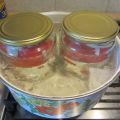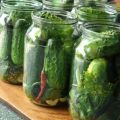How to properly and quickly sterilize jars with vinegar at home
Sterilizing jars with vinegar is a popular way to prepare glass containers for preservation. The technique does not require special financial costs, it is not difficult to carry out. There are also a number of techniques that are not inferior in efficiency. You should first familiarize yourself with all the nuances of the processes.
Is it possible to sterilize jars with vinegar
Sterilizing jars with acetic acid is quite economical, practical, the substance helps to completely disinfect containers from bacteria before preservation. A 70% solution must be used. It completely destroys pathogens, even tubercle bacilli. To achieve the result, it is important to clearly adhere to the proportions, the algorithm of actions.
Preparation of containers before disinfection
It is better to buy glass containers transparent, without cracks, chips, especially at the neck. The lids are also checked for flaws, only new ones are taken, since the old ones can store bacteria in themselves. Pre-rinse the jars with boiled water and soda, leave to dry. Mustard powder or detergent can be used. After using chemicals, rinse the containers with water and vinegar or lemon.
You only need to take a new sponge for washing.
How to sterilize jars with vinegar essence
To quickly sterilize jars before preserving at home, follow the steps below.
- Pour cold, boiled water into clean jars up to the hangers, add 6 tbsp. 70% acetic acid.
- Close the containers with a plastic lid, shake vigorously for 20 seconds.
- Open the jars, pour the solution into other containers, repeat the shaking procedure.
- Pouring water with acetic acid from one container to another, the required number of cans is prepared.
- The sterilized containers are left to dry upside down.
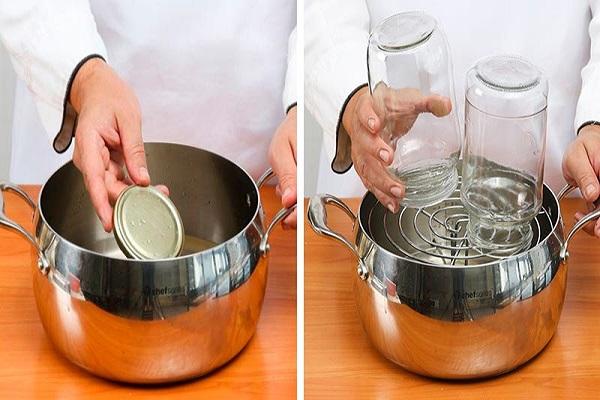
The remaining vinegar liquid can be closed with a plastic lid and stored in the refrigerator. It is advisable to use glass jars with a capacity of 0.5 to 3 liters. They are easy to clean, inexpensive, and the transparency provides good product visibility.
If you use only washed containers, not sterilized, the lid will swell, the blanks for the winter will deteriorate.
Disinfection of glass containers in a pot of water
The classical method of disinfecting a container for conservation involves the use of a saucepan with boiling water.It is advisable to take a vessel with a large diameter so that the maximum number of containers fits in it. A towel is lined on the bottom, cool water is poured. It is important that it completely covers the cans. Washed specimens are placed on the bottom of the pan, upside down, submerging them to the top in water. Do not place containers too tightly to each other, because when the water boils, they can burst. After bubbles appear, wait 15 minutes, and remove 1 piece with a jar mitt.
Iron the towel on which the containers will be placed in advance with a hot iron on both sides.
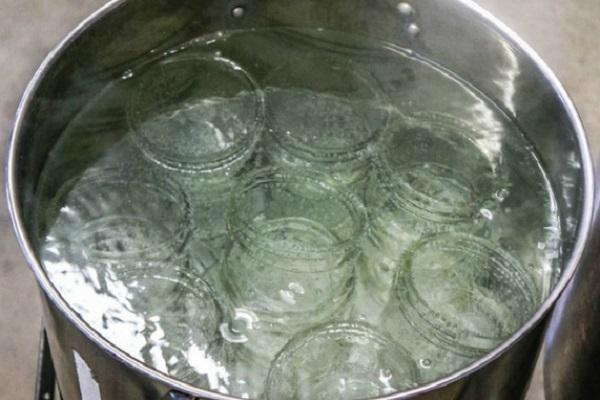
Preparation of containers for preservation in an electric oven
To disinfect cans in an electric oven, perform the following steps.
- Glassware with lids is placed upside down in a cold oven on a wire rack. It can be placed down, but then an unaesthetic whitish coating remains at the bottom.
- Place metal covers next to it.
- Set the "convection" mode with blowing, or "top - bottom heat", turn on the temperature at 150 degrees.
- Close the oven door, sterilize the cans.
Glass products with a volume of 2-3 liters, keep in the oven for 20 minutes, liter - 15 minutes, 0.5 liters - 10 minutes. After manipulation, they are taken out, placed on a clean, dry towel. You should take not wet gloves or a potholder, otherwise, the containers will burst.
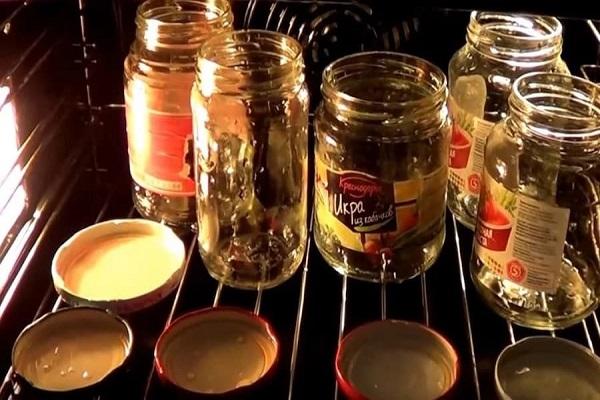
Disinfection of containers for preservation in the oven of a gas stove
The process of disinfecting glassware for preservation in a gas oven differs slightly from the case with an electric oven.
- Glass products are placed in chilled water. Containers cannot be placed tightly, otherwise they will burst.
- The gas oven is first heated, setting the temperature to 50 degrees, and after 5 minutes, it is raised to 180 degrees.
- The duration of the disinfection process is the same as for disinfection with an electric oven, depending on the volume of the container.
After turning off the oven, open the door, allow the containers to cool.
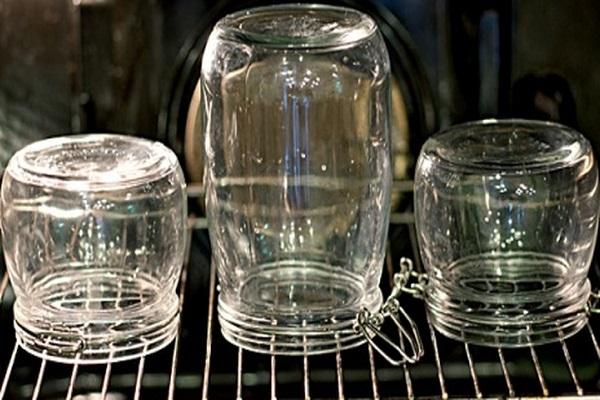
Processing cans for canning in a microwave oven
Jars are widely sterilized in a microwave oven, the method is quite effective, but a lot of containers do not fit into the device. The procedure is carried out as follows.
- Banks are washed with soda, 1-2 cm of water are poured into each container. If we are talking about a 3 liter container, you will need a glass of water.
- Place containers in the microwave, leaving little space. Vessels with a capacity of 2-3 liters are placed on a barrel.
- If the oven is with a capacity of 700-800 volts, containers are sterilized for 3 minutes, and 3 liter containers - 5-6 minutes. After boiling water in containers, wait 5 minutes.
- The jars are taken out of the microwave with dry gloves, the remaining liquid is poured out of them, put on a dry towel to dry.
- It is advisable to fill hot containers with conservation immediately.
Metal covers cannot be disinfected in a microwave oven; it may fail.
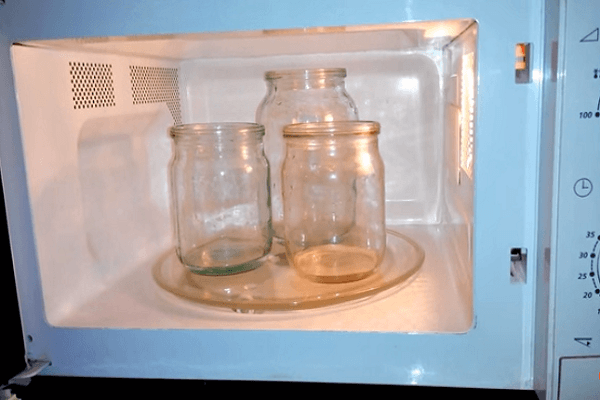
Disinfection of caps
Often housewives carefully sterilize the jars, and the lids are simply poured over with boiling water. This method is not correct, since conservation can deteriorate. The covers are pre-washed and heat treated. They cannot be disinfected in a microwave oven.
- Metal covers. It is enough to boil them for 5 minutes, or place them together with glass containers in a double boiler. The oven will not work unless you remove the rubber seals, otherwise they will melt.
- Capron covers. Put them in a small saucepan, pour boiling water over them. They are taken out after the water has cooled down, when you can put your hands in it.
- Glass. The lids made of glass are disinfected together with the jars, the gaskets are boiled separately.
These methods will help preserve the product for a period of about 12 months, provided it is properly stored in a basement or cellar.
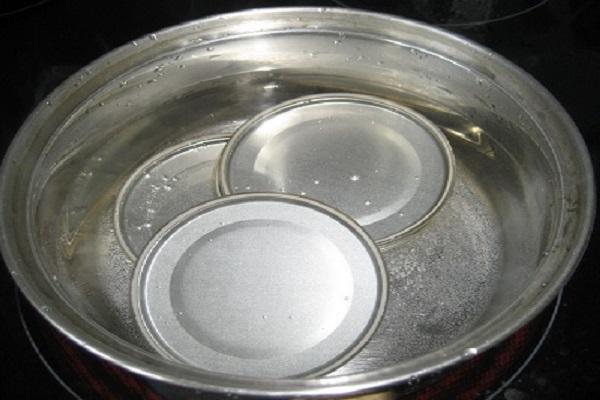
Re-pasteurization
Sometimes it is required to disinfect jars already filled with conservation. Liquid blanks are sterilized for 10-15 minutes, thick ones - for 2 hours or more. Products with acidity require less pasteurization time, depending on the volume. The larger the container, the longer it takes to process it. It is advisable to write down the boil time on paper.
Pasteurization in a pot of water:
- liquid is poured until it reaches the shoulders of glass containers;
- cans with conservation are loosely closed with disinfected lids;
- when bubbles appear, wait 30 minutes in the case of 3-liter containers, 2-liter containers - 20 minutes, liter containers and with a smaller capacity - 10 minutes;
- take out the dishes, tighten the lids tightly;
- turn upside down, cover with a towel on top.
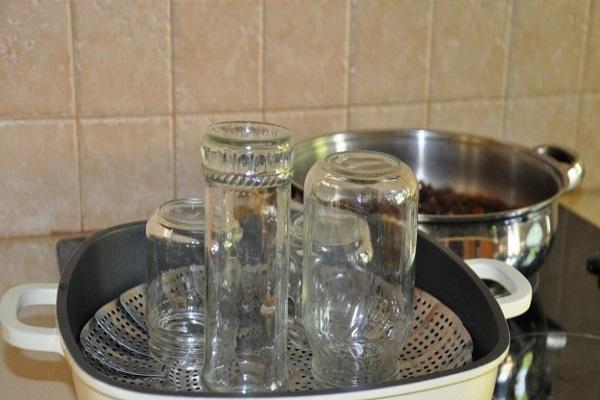
Pasteurization of cans with preservation in the oven:
- preheat the oven to 50 degrees, put preservation there, set the temperature to 150 degrees;
- pasteurize containers for as long as required, depending on their volume.
There are several methods for pasteurization, alternating between them. Upon completion of the process, immediately seal the cans with a key, checking the quality of the sealing.
Reviews of sterilizing cans with vinegar
Below are the responses about the treatment of containers with acetic acid, which will help you make the right choice.
Alina Ivanova, 34 years old, Lviv
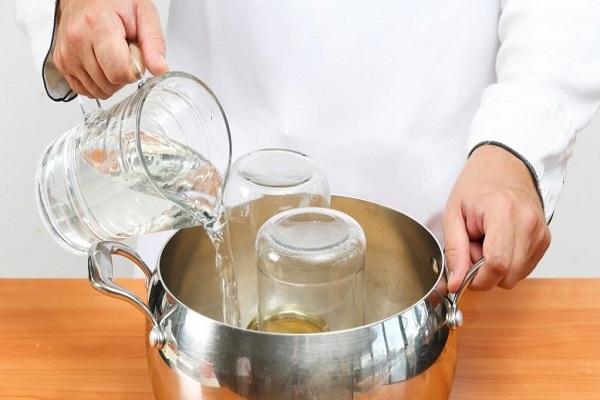
Hello! I sterilized the jars with acetic acid, made preserves from cucumbers and tomatoes. They ate them all year round, the product did not deteriorate. The lids were processed in boiling water, they did not swell.
Roman Ignatov, 39 years old, Kazan
Hello to all! He made preparations for the winter, jam, beetroot. I sterilized the jars with vinegar, I am completely satisfied with the result. The food that had not been eaten lay in the pantry until the next fall and did not deteriorate.
Victoria Lyubimova, 57 years old, Sergiev Posad
Greetings to all! For several years in a row I have sterilized jars with vinegar, the products last for a long time. I take metal covers, disinfect them in a multicooker.
